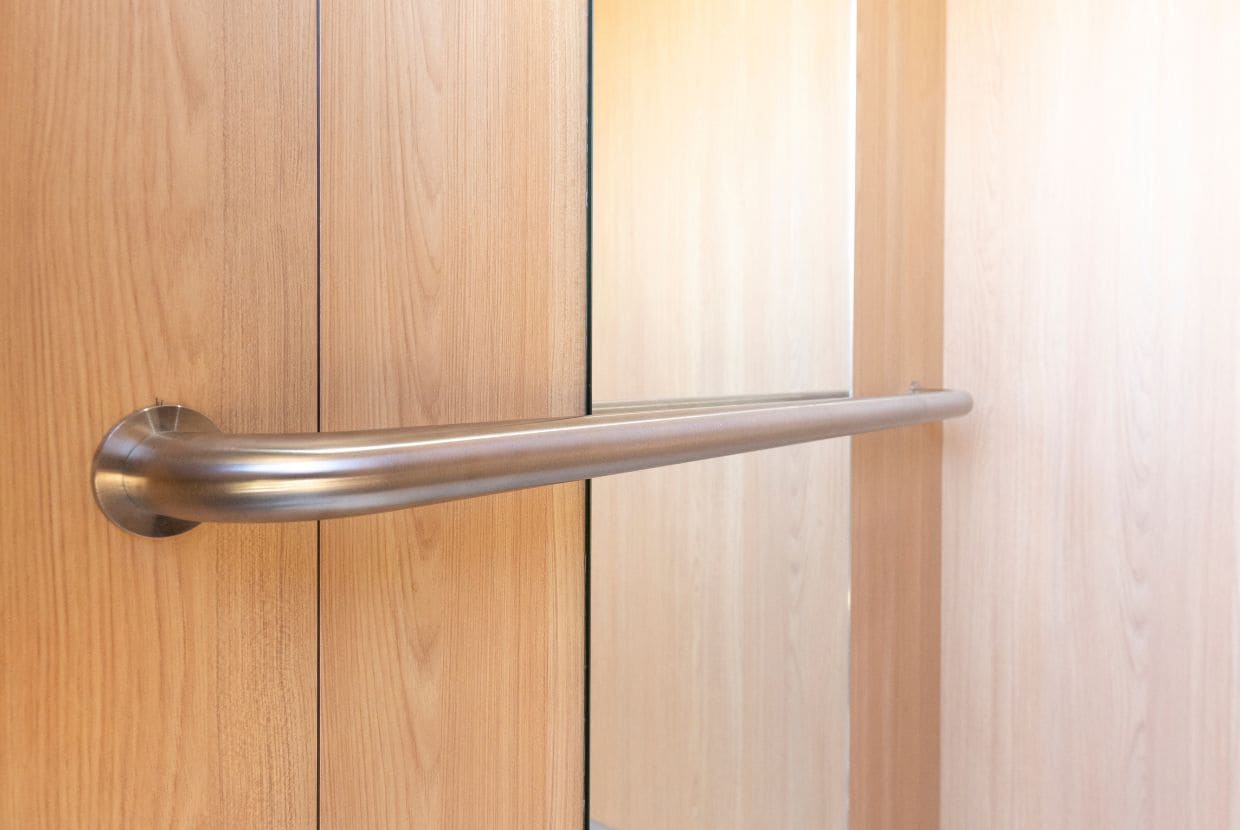Accessibility is a fundamental right that seeks to guarantee equal opportunities for all people, regardless of their physical condition. The installation of adapted lifts is essential to eliminate architectural barriers that prevent people with reduced mobility from moving comfortably anywhere. If you are thinking about how to choose a lift for people with disabilities, you have come to the right place, as in this article we are going to explain the conditions that these lifts must have to guarantee the inclusion of all people.
What are adapted lifts?
Adaptive lifts are different from other lifts because they allow users with reduced mobility to move around without needing assistance.
These lifts, in addition to reducing the risk of falls or accidents by avoiding the use of stairs, also encourage active community participation by eliminating physical barriers.
Accessibility in public buildings is not only a legal requirement, but also a matter of responsibility and social commitment.
Next, we will quickly review what the regulations and current accessibility standards indicate, and then go into detail about the characteristics that adapted lifts must have.
What does accessibility regulations for lifts say?
If you are wondering how to choose a lift for disabled people, you should know that there are mandatory regulations, at European and national level, that establish the standards for adapted lifts. These are:
UNE-EN 81-70 standard:
This is a European regulation focused on the rules for the installation of lifts adapted for people with disabilities. This regulation specifies the requirements that these lifts must have: dimensions of the cabin, height of the buttons, safety elements and signage. In the following section, we list one by one these requirements that accessible or adapted lifts must meet.
National and local legislation
At the national level, the Technical Building Code (CTE) establishes the accessibility criteria that both public and private buildings must meet.
Horizontal Property Law
It is the law that regulates coexistence in communities of neighbors. The Horizontal Property Law establishes that the installation of an accessible lift is mandatory, in communities of neighbors, if requested by residents with disabilities or over 70 years of age, as long as its cost does not exceed 12 ordinary monthly payments of common expenses. We invite you to read Grants for the Installation of Lifts.
Features of a lift adapted for people with disabilities.
Cabin dimensions: According to the UNE-EN 81-70 standard, the cabin of an adapted lift must be spacious enough to allow both access and maneuvering of a wheelchair.
Specifically, on how to choose a lift for disabled people, the dimensions of the cabin must be:
Width: Equal to or greater than 1.10 meters.
Depth: Equal to or greater than 1.40 meters.
These minimum measurements ensure that a wheelchair can turn comfortably inside a lift cabin.
Automatic and wide doors:
The doors of an adapted lift must be automatic, which does not include double-door lifts in which the outer door is hinged and is opened manually. In addition, the minimum opening of the lift door must be 80 centimeters.
In addition, it is essential that the door has sensors to prevent accidental closing of the doors when someone is entering or exiting the lift.
Features and position of buttons:
All lift buttons (including call buttons) must be between 0.90 and 1.20 meters from the floor.
In addition, it would be advisable to include Braille labels so that visually impaired people can easily identify the different buttons.
Additionally, it is recommended that the cabin have light and sound indicators that confirm the selection of the chosen floor, as this can be of great help to people with visual and hearing disabilities.
Handrails and mirrors:
The lift cabin must have a handrail on at least one of the internal walls. This handrail must be at a height of 0.90 meters and serves as additional support.
Additionally, placing mirrors on the wall opposite the door can help wheelchair users locate the exit and maneuver more easily.
Maintenance of adapted lifts and technical service
Now that you know how to choose a lift for disabled people, all you need to do, once the adapted lift is installed, is find a good lift maintenance company that carries out regular preventative maintenance and acts in the event of a failure or emergency.
At Eleva Balear we are specialists in lifts in Mallorca
Our company, in addition to the installation of lifts in Palma de Mallorca, offers the service of lift maintenance with customized maintenance plans that ensure your lift is always operating in perfect condition.
At Eleva Balear, specialists in lifts in Mallorca, we have extensive experience in carrying out lift installations that fully comply with safety regulations and guarantee accessibility for all people.
If you need to install an accessible lift, contact us today and we will help you find the best solution, with personalized attention and expert advice.




